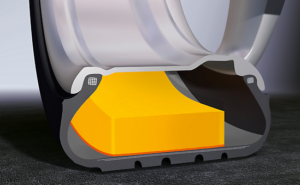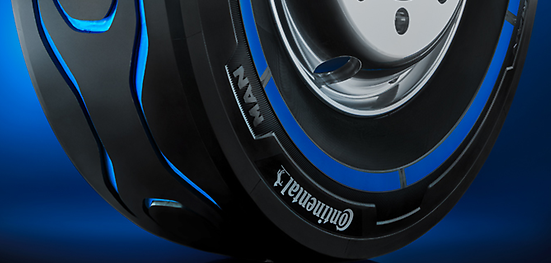Vehicles with electric and hybrid drives are generally heavier than their conventional counterparts, they put more torque onto the road when moving off, and the almost silent powertrain means other sounds such as tire noise become more prominent. According to Continental, all of these factors, as well as considerations such as minimizing rolling resistance, present tire developers with a host of challenges.
For example, the additional weight of any batteries and electric motor is offset by increasing the load-bearing capacity of the tire carcass, as indicated on most tires by an XL symbol on the sidewall. “There are currently moves afoot within the industry to standardize tires with even higher load capacities, which would then probably bear an XL+ symbol,” says Andreas Schlenke, a tire development engineer at Continental. “Keeping the wear caused by the high levels of torque when moving off relatively low calls for modifications to both the tread pattern design and the tread compound.”
Energy losses due to tires are of particular concern to EV manufacturers. With rolling resistance accounting for up to 20% of a vehicle’s energy consumption (regardless of whether it is IC powered or electric) any savings here can have a significant effect on range. However, steps taken to reduce parasitic losses from the tires tend to be at odds with those used to improve both grip and wear resistance.
Continental explains that low rolling resistance, without sacrificing other areas of performance, is achieved by a blend of tread compound, tread pattern and the construction of the tire – the sidewall in particular – as well as by keeping the overall weight to a minimum. For example, some manufacturers reduce the proportion of carbon black used in their compounds with silica, which provides both low resistance and good wear properties.
 In EV applications, any such changes also have to be offset against potential increases in noise, although this can be countered through other measures. For example, the addition of elements such as a foam inlay within the tire can help attenuate road noise.
In EV applications, any such changes also have to be offset against potential increases in noise, although this can be countered through other measures. For example, the addition of elements such as a foam inlay within the tire can help attenuate road noise.
The above considerations also apply to commercial vehicles such as electric trucks and buses, for which Continental also develops tires. Again, tread pattern and sidewall construction are key to achieving low noise and high durability, but additionally, the size and shape of the tire has a role to play. With its truck tires, the company uses a ‘tall and narrow’ concept, whereby a larger diameter tire with a narrower contact patch will have a lower rolling resistance than a wider, smaller tire.



